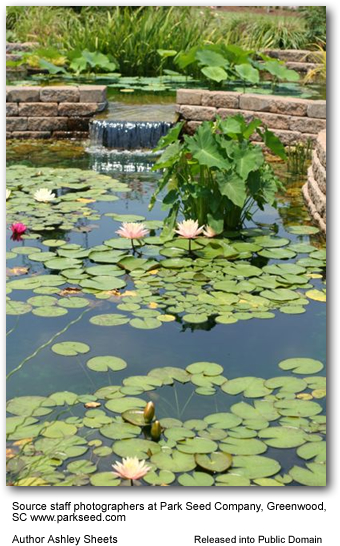Inviting Wildlife to Your Garden: Build a Pond!
Build Your Own Pond!
If you want a water source that requires more initial work but less upkeep overall, a pond may be a great choice. Start with a simple design and gradually build on it.

Step-by-Step Guide
Dig the Hole
The obvious first step is to dig a hole. Spray the hole with water after each digging session will help loosen the dirt up thus facilitating the digging. If you're using a pre-formed liner, place it on the ground first to mark the shape you'll dig. With a PVC or rubber fabric liner, make sure the liner can cover the hole and some distance from the edge. Try to make flat areas. A flat bottom offers secure footing as you finish shaping your pond. Dig your pond at least one foot and preferably two to three feet deep. Deeper ponds allow frogs to hibernate near the bottom during cold months.
Prepare the Padding
Pad the hole with sand or old carpet to even out rough spots and protect the liner. If your pond site has roots and rocks, you'll need to make an extra effort to protect the liner.
Install the Liner
Install the liner. Use the dirt and rocks you removed to cover the edges of the liner.
Fill and Plant
Fill with water and water plants.
Recommendations
For Frogs: If you want to attract frogs, leave fish out of your pond because they eat frog eggs and tadpoles. You might be able to have fish and frogs if you make lots of hiding places for frogs using leafy branches. These provide cover as well as nutrients.
For Perching: Piles of rocks, emerging as islands, and vegetation also give frogs and dragonflies a place to perch. Don't make the sides too steep.
Safety: Make sure you provide a slope or stepped escape route (maybe a tree branch / log) for frogs or other small critters should they fall in.